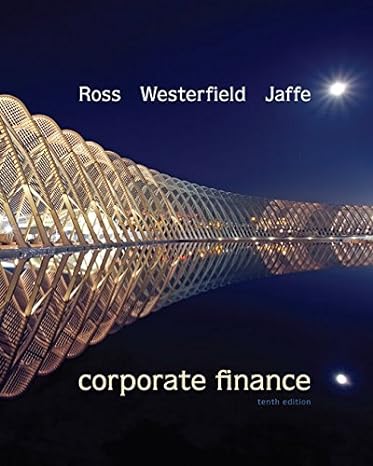What is the floor value of the S & S Air convertible bond? Chris Guthrie was recently
Question:
What is the floor value of the S & S Air convertible bond?
Chris Guthrie was recently hired by S & S Air, Inc., to assist the company with its shortterm financial planning and to evaluate the company ’ s performance. Chris graduated from college five years ago with a finance degree. He has been employed in the finance department of a Fortune 500 company since then.
S & S Air was founded 10 years ago by two friends, Mark Sexton and Todd Story. The company has manufactured and sold light airplanes over this period, and the company ’ s products have received high reviews for safety and reliability. The company has a niche market in that it sells primarily to individuals who own and fly their own airplanes. The company has two models: The Birdie, which sells for $53,000, and the Eagle, which sells for $78,000.
S & S Air is not publicly traded, but the company needs new funds for investment opportunities.
In consultation with Tonisha Jones of underwriter Raines and Warren, Chris decided that a convertible bond issue with a 20-year maturity is the way to go. He met with the owners, Mark and Todd, and presented his analysis of the convertible bond issue.
Because the company is not publicly traded, Chris looked at comparable publicly traded companies and determined that the average PE ratio for the industry is 17.5. Earnings per share for the company are $1.75. With this in mind, Chris concluded that the conversion price should be $45 per share.
Several days later Todd, Mark, and Chris met again to discuss the potential bond issue.
Both Todd and Mark have researched convertible bonds and have questions for Chris.
Todd begins by asking Chris if the convertible bond issue will have a lower coupon rate than a comparable bond without a conversion feature. Chris replies that to sell the bond at par value, the convertible bond issue would require a 5 percent coupon rate with a conversion value of $680.56, while a plain vanilla bond would have an 8 percent coupon rate.
Todd nods in agreement, and he explains that the convertible bonds are a win – win form of financing. He states that if the value of the company stock does not rise above the conversion price, the company has issued debt at a cost below the market rate (5 percent instead of 8 percent). If the company ’ s stock does rise to the conversion value, the company has effectively issued stock at above the current value.
Mark immediately disagrees, arguing that convertible bonds are a no-win form of financing. He argues that if the value of the company stock rises to $45, the company is forced to sell stock at the conversion price. This means the new shareholders (those who bought the convertible bonds) benefit from a bargain price. Put another way, if the company prospers, it would have been better to have issued straight debt so that the gains would not be shared.
Step by Step Answer:

Corporate Finance With Connect Access Card
ISBN: 978-1259672484
10th Edition
Authors: Stephen Ross ,Randolph Westerfield ,Jeffrey Jaffe





